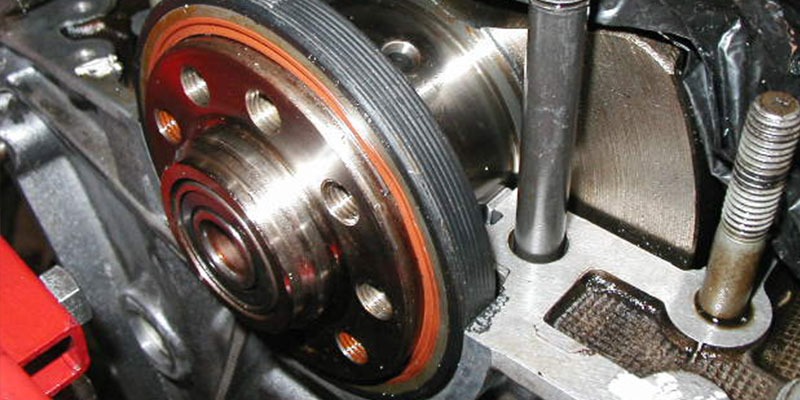Have you ever encountered an issue of Car lights won’t turn off?
If inside car lights remain on even when driving, you may have manually turned them ON with the switch to the side. It could be that the car’s electrical connection is defective. It is nothing to worry about.
While there are several lights in the car, and any of them may be struck ‘on’ due to some internal error in the car or any faulty switch. This blog post will discuss the most probable reasons why car lights won’t turn off.
Parking Lights Won’t turn off.
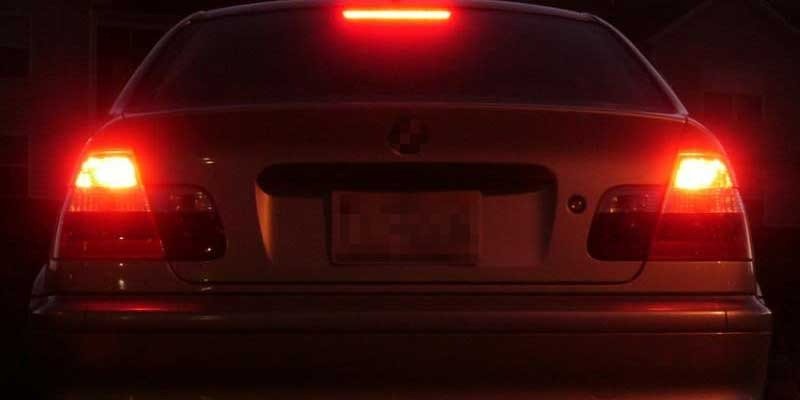
If the parking lights are not turning off, here are some of the probable reasons for that:
1. The issue with Turn Signal
If the turn signal gets struck at ‘on’, it can be due to spring breakage in the turn signal arm. The role of this spring is to activate on the completion of vehicle turn and turn off the blinking turn signal light. In the event of damage, the turn signal will not work.
As the spring does not let the arm return to its original position, you can feel your steering arm be different.
2. Crossed Circuits
Sometimes the circuits get crossed so that parking lights won’t turn off. Although it is rare, it can be the reason for causing all types of light issues with your car. If the other lights in your car also create problems along with the parking light, then this is the only probable reason. You may encounter a problem with the headlight, or the dash light may blink randomly.
Put the parking light switch in the ‘off position. If the brake lights and parking lights are still struck, crossed circuits are the real culprit.
3. Shutting off the Parking lights

A common problem that most people encounter is that their parking lights won’t turn off after turning off the car. Hit the parking light switch near your steering wheel to check if the problem is resolved. Just flip the switch to fix the problem. The parking lights will turn off immediately.
If you cannot locate the switch, check out the user manual to find it. Depending on the model and make, it may be in a different location.
4. Disruption with Auto-off Feature
If any foreign projector blocks the auto-off relay feature sensor, the car’s automatic system will perceive that there is always dark outside. Thus the parking lights will always be ‘On’. Any glitch in the relay timer also disrupts the lights from shutting down even if the engine is turned off, as they do not receive the signal.
The Headlights are Not Turning Off.
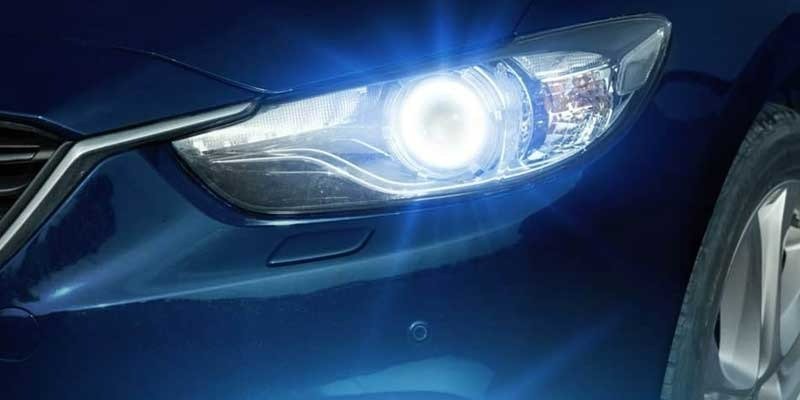
Here are some possible reasons why a car’s headlights are not turning off:
1. Failing Automatic Daytime Running Lights
Modern cars come with a daytime running light module to assess the outside condition. If auto headlight mode fails, the headlights will strike constantly. Use the parking brake to turn them off. Parking breaks disable the automatic light functioning, and the lights will turn off. Alternatively, you can obliterate the automatic system.
2. The Single Headlight is On.
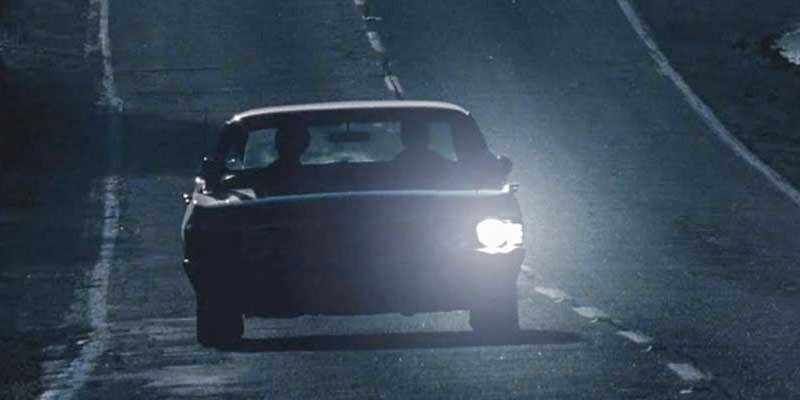
Another issue with problematic automatic lights is that one headlight remains on while the other shuts off after turning off the engine. It is frequent and common with the newer cars. One of them will continue to be ‘on’ even after the automatic shutdown time as the lights are out of sync.
You can resolve it again by applying parking brakes. If the light shuts down with this, the real cause is the faulty automatic light system.
Another reason could be a burned-out headlight. In this case, you need to replace the bulb.
3. Engine Timer has Failed.
The headlight remains on once you shut off the engine before turning it off. If lights are not turned off after some time, and the car system has no issue, it could be a problem.
Turn off the headlights before turning off the engine to resolve the issue.
4. Broken Relay
When the system sends bad relay information, the headlights become impossible to turn off. The headlight relay is located under the car’s hood giving them the signal on how long they need to be ‘on’ before shutting off completely.
Try to tap the relay gently and figure out if it is struck. If the lights shut down after flickering, this was the probable cause. Swap it with a new relay to resolve the issue permanently.
Interior Car Lights Won’t Turn Off.
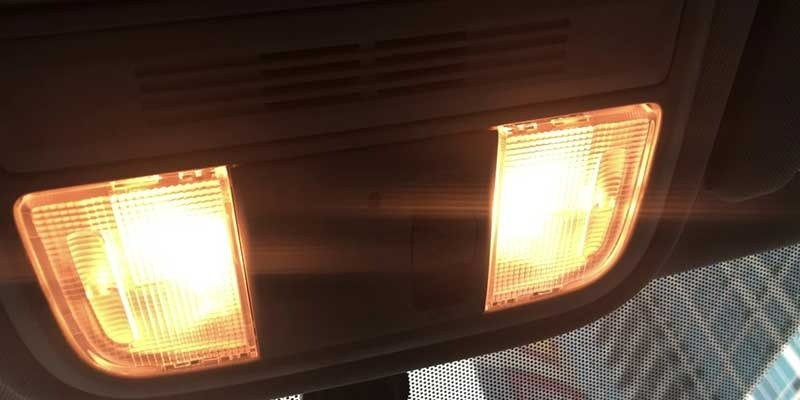
Here are the common reasons for interior car lights won’t turn off, along with the simple remedies to fix inside car lights:
1. Broken Door Switch
A broken door switch indicates to your car that the doors open, and hence the lights will never turn off.
Open each door and find each door switch to check which one remains in the open position. Once you press each switch and check if the light turns off, you should hear a clicking noise while pushing these door switches. If no such sound is audible, it indicates a broken switch.
2. Activated Control Knob

If the car switch gets stuck at the ‘on’ position, the car light won’t turn off. Adjust the dome light if the brightness is lowered. You can also consider turning off the dome lights the whole way. If the brightness is not lowering down or the dome light is not shutting off entirely after turning it off, the light switch is broken. Try to adjust the dimmer switch to the farthest position.
You should also check if the headlight switch setting is on highest. It can create an issue while turning off the interior lights.
To save the draining battery, you should consider removing the bulb.
Common Causes of Car Lights Not Turning Off and How to Address Them
Here are the other common causes of car lights not turning off:
1. Malfunctioning Headlight or Interior Light Timer
One of the common causes of car lights not turning off is a malfunctioning headlight or interior light timer. Many modern vehicles are equipped with a timer that automatically turns off the headlights or interior lights after a set period to conserve battery life. If this timer is not functioning correctly, it can cause the lights to remain on even after you’ve left the vehicle.
According to a study by the National Highway Traffic Safety Administration (NHTSA), malfunctioning timers accounted for approximately 5% of reported car light issues. To address this issue, check your vehicle’s owner’s manual for instructions on resetting or adjusting the timer. If the problem persists, you may need to consult a mechanic to replace the timer.
2. Damaged or Stuck Brake Light Switch
A damaged or stuck brake light switch can also cause car lights, specifically brake lights, to remain on. The brake light switch is usually located near the brake pedal and is responsible for activating the brake lights when the pedal is pressed. If the switch becomes damaged or stuck, the brake lights can remain illuminated even when the pedal is not being pressed.
An Automotive News survey found that 8% of reported brake light issues were due to a damaged or stuck switch. To fix this problem, inspect the brake light switch for any visible damage or debris. If the switch appears to be stuck, try cleaning and lubricating it. If the issue continues or the switch is visibly damaged, it may need to be replaced.
3. Electrical Issues or Short Circuits
Electrical issues or short circuits within the vehicle’s wiring can also result in car lights not turning off. This can occur if there is a damaged wire, a loose connection, or corrosion within the electrical system. Short circuits can not only cause lights to remain on but can also lead to more serious issues such as electrical fires.
The National Fire Protection Association (NFPA) estimates that approximately 20% of vehicle fires are caused by electrical issues. If you suspect a short circuit or other electrical problem, it is crucial to address it immediately. In most cases, it is best to consult a professional mechanic to diagnose and repair electrical issues, as they can be complex and dangerous to fix without proper expertise.
4. Defective Light Control Module
Lastly, a defective light control module may cause car lights to remain on. The light control module is an electronic component that manages various lighting functions within the vehicle, such as headlights, interior lights, and parking lights. If the module is defective, it can send incorrect signals to the lights, causing them to stay on.
A study by the Society of Automotive Engineers (SAE) found that 3% of car light issues were attributed to a defective light control module. If you suspect that your vehicle’s light control module is causing your lights to stay on, consult a professional mechanic for a proper diagnosis. Replacing the defective module may be necessary to resolve the issue.
In conclusion, car lights that won’t turn off can be caused by various issues, including malfunctioning timers, damaged brake light switches, electrical problems, and defective light control modules. Addressing these issues promptly is essential for maintaining vehicle safety and preventing potential damage. In many cases, consulting a professional mechanic is the best course of action to ensure accurate diagnosis and proper repairs.
What Should I Do?
If you are leaving your car light ‘on’ due to any reason, it will cause rapid draining of the car battery. If you leave these lights on overnight, you may not be able to start your car the following day. To avoid this situation, you should always disconnect the battery cables from the battery. Start by disconnecting the negative battery terminal. Check for the (-) sign on your battery terminal to ensure it is negative.
Now pull off the clamp of the battery by loosening the nut. Ensure that the cable will not touch the battery terminal leading to current flow. The car’s electronic control unit takes time to reset for reconnecting the battery as the disconnection results in clearing off the previous settings.
If the problem is with the headlights, you can consider removing the relay to turn off the headlights. However, this is a complicated process, and it requires considerable knowledge. Before starting the process, you must know which relay control is causing the issue.
A common issue many drivers face is car lights that refuse to turn off. This can lead to drained batteries, potential fines, and even accidents due to poor visibility. In this article, we will explore various solutions to fix car lights that won’t turn off, including inspecting and replacing door jamb switches, repairing or replacing a malfunctioning headlight switch, checking and replacing damaged relays, and diagnosing and fixing electrical issues. We will provide detailed step-by-step processes and the tools needed for each solution, ensuring that you can address this problem safely and effectively.
A. Inspecting and Replacing Door Jamb Switches
Tools Needed
- Screwdriver
- Multimeter
- Replacement door jamb switch (if necessary)
Step-by-Step Process
Step 1: Locate the door jamb switch. This switch is typically found near the door hinge and is responsible for turning off the interior lights when the door is closed.
Step 2: Remove the door jamb switch using a screwdriver. Be careful not to damage the surrounding components.
Step 3: Test the switch using a multimeter. If the multimeter shows no continuity when the switch is pressed, it is faulty and needs to be replaced.
Step 4: Install the new door jamb switch. Reconnect any wiring and secure the switch with the screwdriver.
Step 5: Test the newly installed switch by opening and closing the door. Ensure that the interior lights turn off when the door is closed.
B. Repairing or Replacing a Malfunctioning Headlight Switch
Tools Needed
- Screwdriver
- Replacement headlight switch (if necessary)
Step-by-Step Process
Step 1: Locate the headlight switch, which is typically found on the dashboard or steering column.
Step 2: Remove the trim surrounding the headlight switch using a screwdriver.
Step 3: Disconnect the wiring connected to the headlight switch.
Step 4: Test the switch for signs of wear or damage. If necessary, replace the switch with a new one.
Step 5: Reconnect the wiring and reassemble the trim.
Step 6: Test the new headlight switch by turning the headlights on and off.
C. Checking and Replacing Damaged Relays
Tools Needed
- Relay pliers
- Replacement relay (if necessary)
Step-by-Step Process
Step 1: Locate the relay panel, typically found in the engine compartment or under the dashboard.
Step 2: Identify the specific relay associated with the car lights by referring to the owner’s manual or the diagram on the relay panel cover.
Step 3: Remove the faulty relay using relay pliers.
Step 4: Install the new relay by carefully aligning and pressing it into place.
Step 5: Test the new relay by turning the car lights on and off. Confirm that the lights turn off when the switch is turned off.
D. Diagnosing and Fixing Electrical Issues
Tools Needed
- Multimeter
- Wire strippers
- Electrical tape
Step-by-Step Process
Step 1: Check for any visible signs of frayed or damaged wiring in the car’s lighting system.
Step 2: Use a multimeter to test the continuity of the wiring. If there is a break in the circuit, it indicates a short circuit or damaged wiring.
Step 3: Identify the specific location of the damaged wiring and use wire strippers to remove the insulation.
Step 4: Repair the wiring by either soldering the wires together or using a wire connector.
Step 5: Wrap the repaired area with electrical tape to protect the wiring and prevent future damage.
Step 6: Reconnect any disconnected wiring and test the car lights to ensure they turn off when the switch is turned off.
Frequently Asked Questions
In How Much Time Interior Car Lights Can Drain the Battery?
Although it depends on the number of lights in your car, interior lights usually drain the car’s battery in 4-8 hours.
Why are my Car’s Interior Lights Not Turning Off?
Either the interior light switch is permanently stuck on the ‘on’ position, or the car door switch is broken and needs replacement or realignment.
Can the Interior lights of my Car Turn Off Automatically?
The interior lights won’t turn off if the switch is set to the permanent ‘on’ position. You need to turn off the lights manually by switching them. Many modern cars come with an automatic turn-off feature for light when the vehicle is not used for a certain period.
How to Turn Off the Dome Light of my Car?
It is possible to move or adjust the dome light switch accidentally. Before proceeding with fault-finding, make sure it is in its correct position. The dome light may be activated by opening and closing doors. It will usually go out after a short driving time.
Why Won’t My Car’s Interior Lights Turn Off?
You may have set the interior light switch to be permanently on, or it may be that the door switch is broken and needs to be realigned or replaced.
After Turning the Engine Off, My Parking Lights Won’t Turn On. Why?
The reason why parking lights are still on even if the engine is off is that the parking light switch is on. This switch is located near the steering column and controls if the lights will be on or off irrespective of the fact whether the key is in the engine or not.
Why do Headlights Remain ‘On’ Even After Turning off the Ignition?
Modern cars have a delay function that allows the headlights to be turned off for a while after the engine has been switched off.
What Should I do if my Car’s Headlights Don’t Work During the Day?
Check to make sure your sun sensor is functioning. The sunlight sensor can often be left unattached while work is done to a car’s windshield or window wipers. If the automatic setting was chosen, you could choose to turn the headlight switch off.
Conclusion
There are many reasons why lights remain on even when the car is turned off. It can be frustrating to solve electrical problems. If your car lights aren’t working, we hope you find the tips and advice in this article helpful.

My Name is Christopher Angels, and I am a postgraduate in mechanical engineering. Cars have always excited me as a child, and soon I decided to dive into the world of cars by pursuing mechanical engineering. I also worked as a Mechanic for over 3 years to understand Cars’ anatomy and how each part contributes to its working.
My Name is Christopher Angels, and I am a postgraduate in mechanical engineering. Cars have always excited me as a child, and soon I decided to dive into the world of cars by pursuing mechanical engineering. I also worked as a Mechanic for over 3 years to understand Cars' anatomy and how each part contributes to its working.








